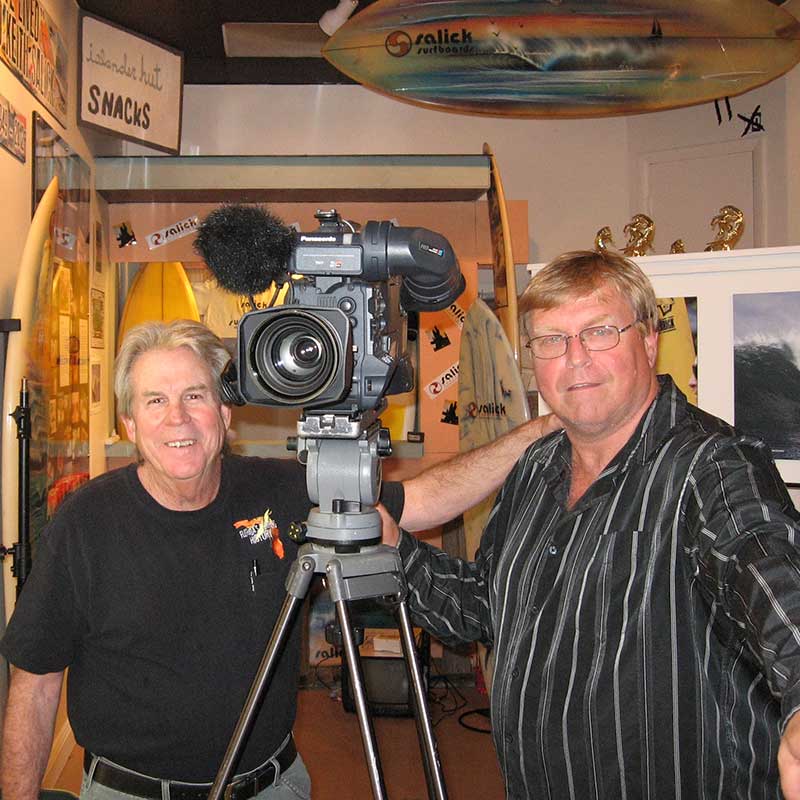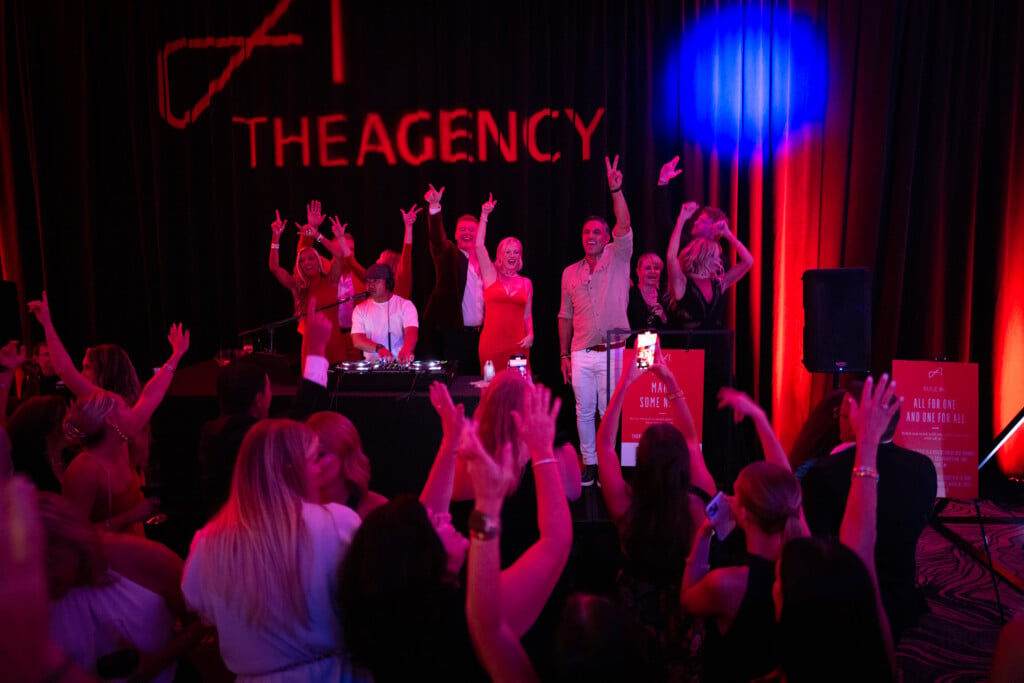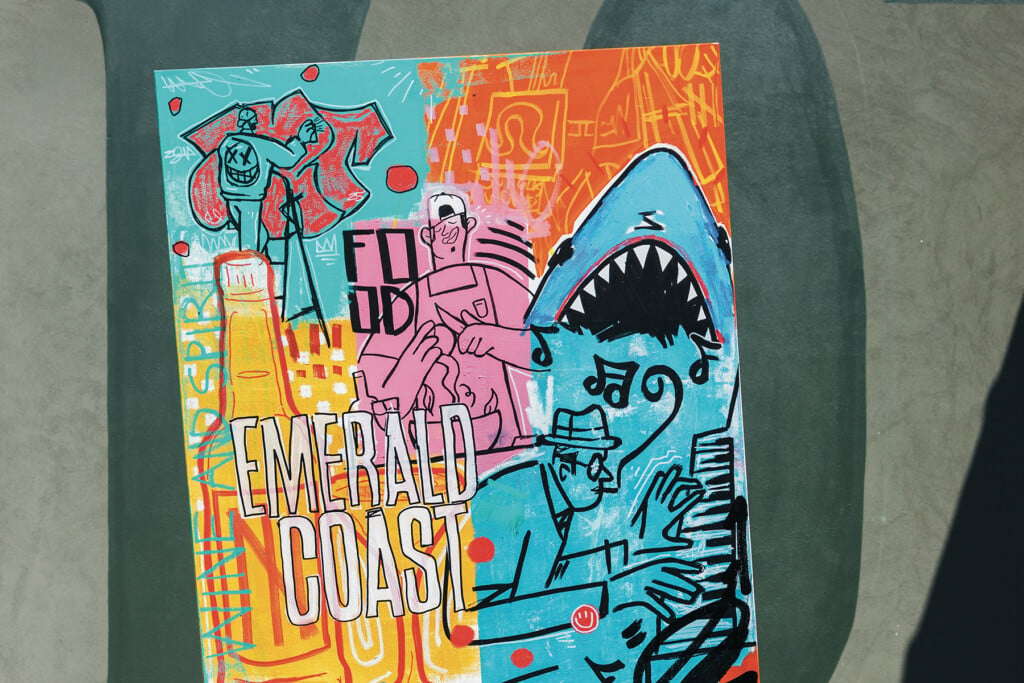Emerald Coast Surfing History Documented in New Film
Surf’s Up!

When hippies came along it saved the face of surfers,” says surfboard builder Hank Warner. Warner is just one of several salty old-time Emerald Coast surfers whose recollections and passion are captured in an engaging, interesting and entertaining first-time documentary film called “Florida’s Surfing History,” created by local producers Mike Cotton and Dave Barnes.
When Cotton, a 50-year seasoned surfer, collaborated on the museum exhibit “Surfing Florida, A Photographic History” at Florida Atlantic University in Boca Raton, he found one thing missing — video. For this producer, there was no question that film footage would bring the story of Florida Surfing alive. And with the exhibit being “the only real take on Florida surfing culture” around, he wanted to be sure it was done right.
 Surfing originated in Hawaii, made its way to California and local Navy seamen who had seen surfers while stationed overseas eventually made it popular on the Gulf Coast. Though Barnes says it has an 80-year history in Florida, in the 1960s and 1970s the wave of this watersport crested on the Pensacola beaches in particular.
Surfing originated in Hawaii, made its way to California and local Navy seamen who had seen surfers while stationed overseas eventually made it popular on the Gulf Coast. Though Barnes says it has an 80-year history in Florida, in the 1960s and 1970s the wave of this watersport crested on the Pensacola beaches in particular.
Cotton and Barnes, who have nearly 90 years of film, video, TV and photography experience between them, hit the beach in Northwest Florida and uncovered the history — along with a lot of heart and soul — of Florida’s surfing scene through the memories and stories of die-hard surfers who were mainstays along the Gulf Coast beaches when surfing was all the rage.
Most of the local surfers featured in the film were teens in the 1960s and 1970s. That includes Dave Rauschkolb, who simply loved the sport (and perhaps hoped to score a few girls by doing it). Some, like David Brown, became owners of surf shops, while others like Tom Stack became surfboard makers and collectors like J. Michael Stewart. Kids like Dan Stone were lifeguards at the time. A few great surfers, such as Mark Rush, Brenda Stokes and Yancy Spencer IV went pro. One especially talented blonde surfer girl, Patricia Scholtz-Wilcox from Gulf Breeze, was inducted into the East Coast Surfing Hall of Fame.
The unscripted, eclectic mix of first-person interviews gives the film an accessible, authentic feel, which was Cotton’s goal. “This isn’t a surfer movie. It’s a movie about surfing, and we are hoping to appeal to all kinds of people,” Cotton says.
 All of them have one thing in common — it’s hard for them to describe just how sublime they feel when they catch and ride in on a great wave. No matter their age or skill level, surfing is a common “beach bond” and it comes through clearly in the film. As David Brown from Panama City says, “All of us have saltwater in our veins.”
All of them have one thing in common — it’s hard for them to describe just how sublime they feel when they catch and ride in on a great wave. No matter their age or skill level, surfing is a common “beach bond” and it comes through clearly in the film. As David Brown from Panama City says, “All of us have saltwater in our veins.”
The producers spent the summer of 2012 filming casual interviews on the beach and in surf shops with local old-time surfers and stockpiling vintage film footage, photos and newspaper articles, posters and other memorabilia in order to tell the story of surfing in the Sunshine State.
“Our mission is to offer this project as an opportunity to tell a story about the progression of surfing, the memories of this era and the surf culture during the past 50 years,” Cotton says.
The first segment of the documentary “Florida’s Surfing History Part One: The Panhandle” was first screened at the Mattie Kelly Arts Center in January. The producers will continue to document surfing in the rest of Florida by coastal region: First Coast, Space Coast, Treasure Coast and Gold Coast, continuing to film through 2013.
The finished project will be a five DVD box set with bonus content. The Panhandle DVD is available now for purchase for $15 plus $2 shipping. The museum exhibit continues to tour surfing expos and museums as well. For more information on the documentary, contact Mike Cotton at (850) 384-1484 or find the film duo on Facebook at Mike Cotton Dave Barnes Productions.
Florida surfing isn’t the only film producer Mike Cotton would like to see in Northwest Florida. He credits Pensacola Film Commissioner Gail Morgan with making this documentary possible and hopes to collaborate with the commission on more projects that will shine a light on what he says is “considerable talent” in the area.
“The main goal underneath all of these things we’re doing is we’d like to have a regional film festival that would bring in some nationally known people and would feature all of these talented producers,” Cotton says.
If Cotton and Barnes have their way, it looks like the surf movies, and much more, will soon be all the rage on our beaches. Now, that’s how we like to “close out.”


